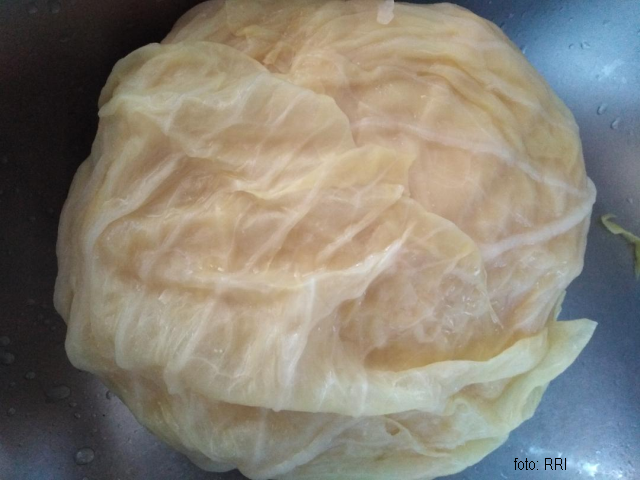Traditionally, late
autumn is marked by the preparation of pickles. Between the orthodox feast of Saint
Demetrius, on October 26 and the feast of Saint Andrew, on November 30, the sauerkraut
is prepared, according to tradition. The process of cabbage souring in the
barrel needs to be a slow, lengthy one, all the more so as temperature readings
are low at this time of the year. They say the cabbage must be covered in a
film of hoarfrost before it is pickled.
For the sauerkraut, we need medium-sized, thin-leaved cabbage heads. That is 15, maybe
20 cabbage heads, roughly weighing 30 kilos, ready to fill a 60-liter wooden barrel,
which may also be made of plastic.
Remove the
withered, outer leaves, while the cabbage cores must be indented with a knife so
that the brine may percolate easier into the cabbage. Apart from the cabbage, put
dried dill twigs in the barrel, dried thyme twigs, horseradish roots, peeled
and finely-shredded length-wise. Also, you may put a quince, two corn cobs, one
red cabbage head or two beetroot heads, if you want the juice to be colored.
Prepare the
brine, mixing salt into hot water, one and a half tablespoon of salt for one
liter of water. Pour the brine over the cabbage heads until the water level
covers the cabbage heads at the top completely. Put a weight over the cabbage
heads to press them down, so that the cabbage heads are immersed in brine
completely.
In two or three
days’ time, you need to perform the so-called airing of the brine. If the
barrel has a tap at the lower side, the brine from the barrel is extracted and
then poured all over again, at the top. If the barrel does not have a tap, the
sauerkraut juice can be aired with the help of a pipe or a flexible tube which
is used to blow air into the lower part of the barrel.
The sauerkraut is used for the preparation
of the stuffed cabbage rolls or the sauerkraut-based dishes. You can also
prepare a salad of finely-chopped sauerkraut, to go with the main course. The
sauerkraut juice is used as a souring agent when a thick soup is prepared.
According to Romanian tradition, at a wedding party the famous giblets soup is served at the crack of dawn. Such a chicken-based soup is soured
with sauerkraut juice. You can also use the sauerkraut, and not only the
sauerkraut juice, to prepare the soup. The sauerkraut soup is one
of the staple fasting dishes. It can be plain, or it can be prepared in combination with
other vegetables. Enjoy!

